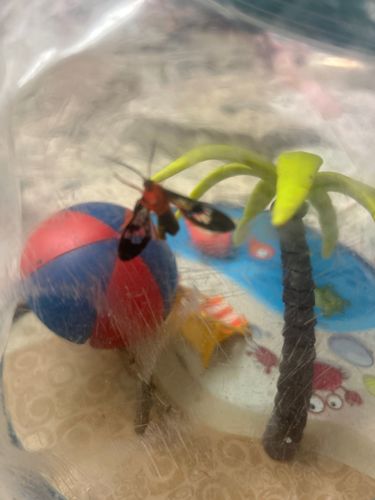Scarlet-bodied Wasp Moth
Scientific Name: Cosmosoma myrodora
Order & Family: Lepidoptera / Erebidae
Size: Wingspan typically ranges from 30-35 mm (1.2-1.4 inches).

Natural Habitat
Subtropical and tropical regions of the Americas, including the southeastern United States (e.g., Florida, Texas). Found in open woodlands, gardens, and disturbed areas where host plants like climbing hempweed grow.
Diet & Feeding
Caterpillars (larvae) feed on plants containing pyrrolizidine alkaloids, such as climbing hempweed (Mikania scandens). Adult moths feed on nectar from various flowers.
Behavior Patterns
This is a diurnal (day-flying) moth that mimics wasps. Its bright red and black coloration is aposematic, warning predators of its toxicity. Males sequester toxins from host plants and present them to females as a nuptial gift to protect her and the eggs. These toxins are also used to create pheromones.
Risks & Benefits
Risks: The moth is toxic if ingested due to alkaloids sequestered from its host plants. It is harmless to humans and does not bite or sting. Benefits: As an adult, it is a pollinator. It serves as a classic example of chemical defense and mimicry in insects.
Identified on: 10/7/2025